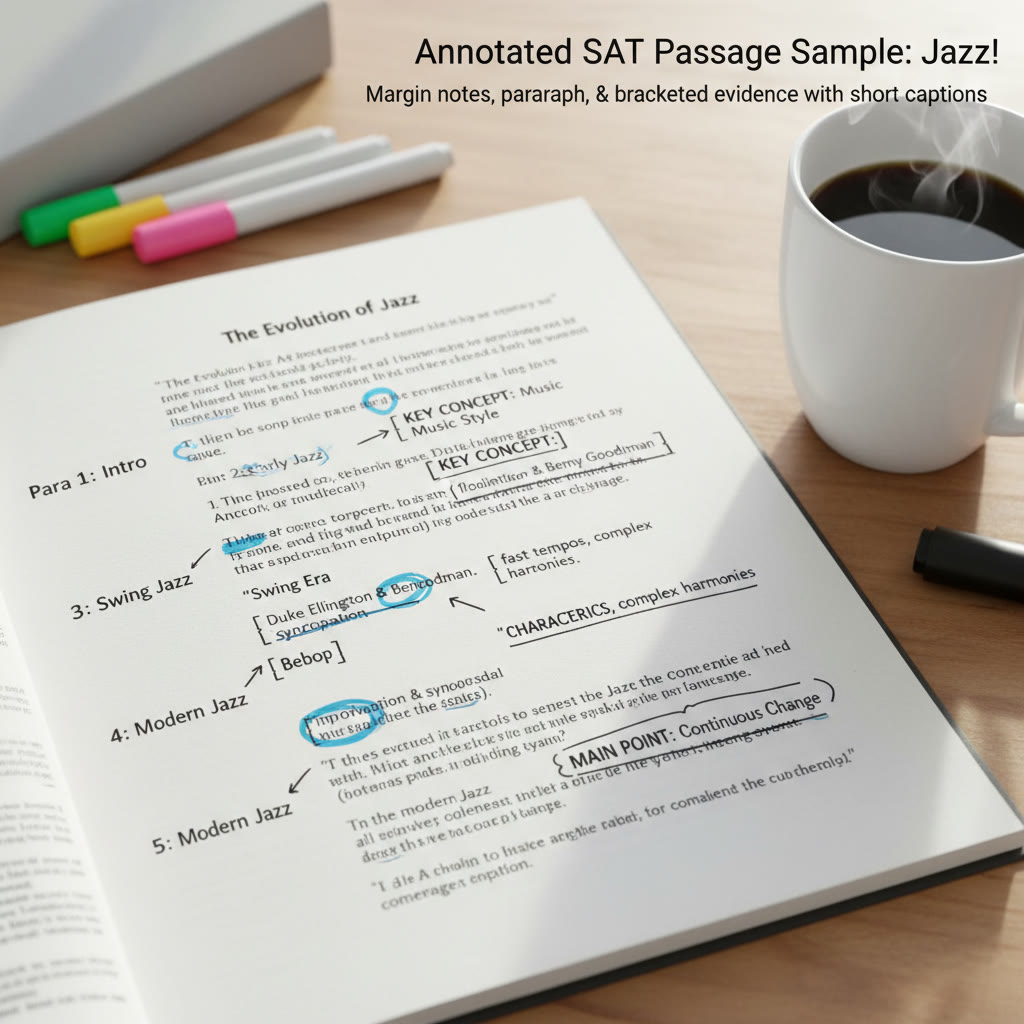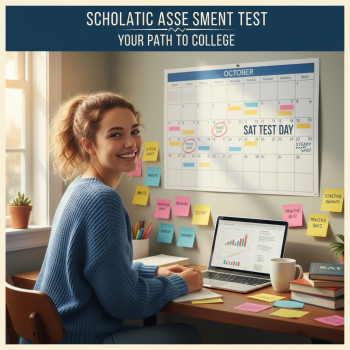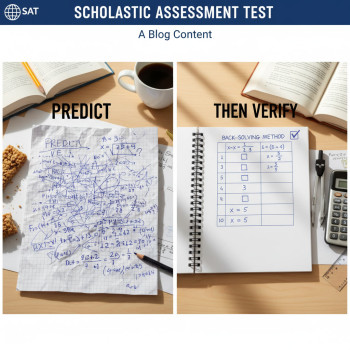Advanced Reading Strategies That Work on the SAT
Walk into the SAT Reading section with a plan, and you’ll turn bewilderment into control. This isn’t about speed-reading every word or memorizing obscure vocabulary lists; it’s about a set of smart, evidence-based habits that help you find answers quickly, avoid traps, and keep your cool when passages look dense. If you already finish most practice sections but still miss a handful of questions, these advanced strategies are built to close that last gap.
Why advanced strategies matter more than brute force
The SAT Reading test rewards precision over volume. The passages are carefully written so that wrong answers often sound plausible. That means your edge comes from strategy: knowing what the test is asking, where to look for proof in the passage, and how to eliminate answers that only sound right. These methods limit careless errors, reduce second-guessing, and convert partial knowledge into consistent points.
Quick overview: the reading test at a glance
Before diving in: the SAT Reading section has 52 questions in 65 minutes. Passages include U.S. and world literature, history/social studies, and sciences; there will also be one set of paired passages. Question types you’ll see most often are detail, inference, main idea, function/structure, words in context, and evidence-based questions that link answers to specific lines. Keep those categories in mind—each demands a slightly different approach.
Set up for success before you read
1. The first 30 seconds: orient, don’t panic
Scan the headings (if present), passage type (literature, history, science), and the length. That tells you the likely tone and question emphasis. For example, literature passages lean on tone and character detail; science ones favor facts, structure, and data interpretation.
2. Know the clock and prioritize
Pacing is a strategic decision. You don’t need to perfectly answer every question on the first read-through. For longer or denser passages, give yourself a quick structural read (see Passage Mapping below) and answer the easiest questions first—this builds momentum and secures points.
Active reading techniques that actually save time
Passage mapping: capture the skeleton
Instead of trying to memorize a paragraph, map the passage as you read: note the main idea of each paragraph in a word or short phrase in the margin, and mark transitions with arrows. This visual outline takes 10–30 seconds per paragraph and pays off when you need to find the function of a specific sentence or the author’s shift in tone.
Example of a simple map for a four-paragraph passage:
- Para 1: Setup—problem introduced
- Para 2: Evidence or example
- Para 3: Counterpoint or nuance
- Para 4: Conclusion/author stance
Annotation: highlight with purpose
Don’t underline everything. Use a small set of consistent marks: star (*) for thesis or main claim, ? for confusing spots to revisit, and box or bracket for evidence lines you’ll likely cite. Underline transition words (however, consequently) because they signal relationship and structure. These marks are signals to your future self when you return to questions.
Read for structure, not for perfection
The SAT loves structure. Ask while reading: What problem is the author addressing? How are the paragraphs organized? Is the author arguing, explaining, or narrating? If you track structure, you often know where to find answers without re-reading paragraphs line-by-line.
Tackling the main question types
Detail questions: find directly, then confirm
For detail questions, go back to the quoted line numbers or scan your map to the paragraph that holds the detail. Read 1–2 lines before and after the cited lines to capture context. Then pick the answer that matches the passage language and avoid choices that introduce new information.
Inference questions: infer, but anchor
Inferences must be supported by the passage, even if not explicitly stated. Translate the inference into a direct restatement tied to passage content. If an answer adds extra conditions or leaps beyond the passage, eliminate it. Good test answers are the one that flows naturally from what’s said—not the one that goes further.
Words in context: use the sentence, then the paragraph
Ignore your pre-test vocabulary lists when you can: context matters more than definition. Replace the target word with each answer choice directly in the sentence and listen for flow. If two answers sound possible in that sentence, check the surrounding paragraph for tone and connotation. Narrow down with tone: is the author ironic? Admiring? Skeptical?
Function/Structure questions: what’s the role?
Ask: what does this sentence/paragraph do? Does it give an example, contrast a point, define a term, or introduce evidence? If you know the paragraph’s map role, you’ll usually pick the answer that matches that function.
Evidence-based questions: pair answers with proof
These two-part questions ask you to choose an answer to a content question and then select which lines best support that answer. The trick: pick the content answer purely from the passage; then, when choosing evidence, pick lines that explicitly justify it. If the evidence is too general or only loosely connected, keep looking.
Paired passages: compare and connect
With paired passages, identify each author’s main claim and the relationship between them (agreement, disagreement, different emphasis). Create a one-line summary for each passage. Many questions hinge on comparative language—phrases like “whereas,” “in contrast,” or “similarly” often signal the heart of the relationship.
Specific tactical maneuvers
Predicted answers: answer before you read choices
For some question types—main idea, function, or inference—try to form a short answer in your own words before looking at choices. You’ll be less likely to be swayed by attractive but incorrect choices that distort scope or direction.
Process of elimination (POE): your best friend
For many wrong answers: they’re too broad or too narrow, introduce outside facts, reverse the passage meaning, or contain extreme modifiers. Eliminate these first and make comparisons between the remaining options—the test often leaves two good-sounding choices where one is subtly off.
Scope check: match the passage’s scope
A frequent trap is an answer that’s true in general but broader than the passage’s scope. For example, if the passage discusses a single scientist’s work, an answer that generalizes to the entire field is probably incorrect. Keep the passage’s subject and timeframe in mind.
Watch for relative words and qualifiers
Words like usually, may, could, often, and sometimes are often correct when the passage hedges. Conversely, answers with absolute words (always, never, completely) are often wrong unless the passage is equally absolute.
Handling challenging formats: graphics and data
Some passages include a small graph or table. Treat it the same way: identify what the axes and labels mean, note trends, and then go back to the question. Figure-based questions often have straightforward answers if you focus on the axis labels and units rather than over-interpreting the data.
| Item | Time | Notes |
|---|---|---|
| Single passages (3–4 passages) | ~12–14 minutes each | Map quickly, answer easy questions first |
| Paired passages set | ~18 minutes | Spend extra time comparing authors and mapping both |
| Buffer/review time | ~3–7 minutes | Use for tough questions or double-checking |
Practice routines that produce real improvement
Quality over quantity
Don’t just do heaps of questions. Do them deliberately. Timed practice is essential, but so is untimed review. When you miss a question, don’t just note the right answer—log why it was wrong and recreate the thought process you should have used. That reflection is where the learning happens.
Targeted drills
If inference questions trouble you, do sets of only inference items from multiple passages. This isolates the skill and builds pattern recognition across different contexts. Rotate skills weekly so you keep vocabulary, structure, and evidence strategies fresh.
Simulate conditions and then review openly
Take full practice sections under test timing to build stamina. After the timed run, review questions without the clock, especially the ones you answered correctly—explain to yourself why each correct answer is best. A blind review (where you don’t look at the answer key until you’ve explained each choice) is a powerful correction method.
Use feedback smartly—human and AI
Personalized feedback speeds progress. A 1-on-1 tutor can spot recurring patterns—like a tendency to over-generalize or fall for extreme words. Likewise, AI-driven insights can flag timing problems and recurring mistake categories. Combine both: human tutors give nuance and emotional support, while AI can analyze large amounts of practice data quickly.
For example, students who work with Sparkl’s personalized tutoring benefit from tailored study plans and expert tutors who help diagnose patterns in errors, while AI-driven insights point to specific question types to practice. That combination helps make practice sessions more efficient and targeted.
Common pitfalls and how to fix them
- Reading into the passage: Fix by forcing yourself to cite lines; if you can’t find direct support, the choice is likely incorrect.
- Over-reliance on memory: Map each paragraph—memory fades quickly under pressure.
- Fixation on vocabulary: Use context, not rote definitions. Many wrong answers use formal dictionary meanings that don’t match passage tone.
- Speed at the cost of comprehension: Slow down for the first read to get structure, then speed up for targeted questions.
Test-day tactics: small changes that matter
Start with confidence
A consistent warm-up routine—5 minutes of light reading and deep breaths—can settle nerves. Remember: your practice pattern is a better predictor of performance than how you feel that morning.
Manage energy, not just time
If a passage feels especially draining, mark and skip it temporarily. Use your natural energy peaks: if you’re sharper early, tackle denser passages first. Keep moving—seven tough minutes are worth than one stalled minute.
Use the test booklet smartly
Write in the margins. Jot those paragraph maps and quick notes. It keeps you anchored and makes returning to questions faster. Your marked-up passage is a personal cheat-sheet—legal and powerful.

Putting it all together: a sample walk-through
Imagine a short social-science passage about urban gardening. You map the paragraphs: introduction of trend, study that measured yields, counterargument about cost, conclusion on benefits. A detail question asks when the author cites the study—use your map and jump to the paragraph labeled “study.” An inference question about motivation requires you to read the concluding reason and spot that the author consistently frames benefits in terms of community rather than profit—an inference anchored in repeated phrasing.
During practice, log each step you took so your brain learns the choreography: map, locate, read surrounding lines, eliminate, choose. That choreography becomes automatic with repetition.
Final checklist before test day
- Practice at least three full Reading sections under timed conditions.
- Create an error log and revisit it weekly.
- Do focused drills on your weakest question types.
- Develop a marking system for passage maps and annotations.
- Consider targeted 1-on-1 sessions—tutors can accelerate progress by tailoring guidance and correcting unseen habits.
Many students find that targeted help—like Sparkl’s personalized tutoring—accelerates their progress because of 1-on-1 guidance, tailored study plans, expert tutors, and AI-driven insights that clarify recurring mistakes and streamline practice. If you choose tutoring, pair it with disciplined solo practice to make the most of every minute.
Closing thoughts: reading like a strategist
The SAT Reading section rewards people who read like detectives and editors: looking for structure, evidence, and the author’s purpose. Adopt a compact set of signals, map as you read, and use POE ruthlessly. Over time, this approach turns the reading test from a guessing game into a predictable set of problems you know how to solve.
Start small: pick one technique—passage mapping or pre-answer prediction—and practice it intensely for a week. Add the next technique after you’ve made it a habit. The compound effect of these micro-changes is huge. With focused practice, realistic pacing, and occasional targeted tutoring, you’ll not only raise your score—you’ll read smarter and with more confidence on test day.

Good luck—trust the process, track your progress, and remember: strategy beats stress. Read with purpose, answer with evidence, and the score will follow.




















No Comments
Leave a comment Cancel